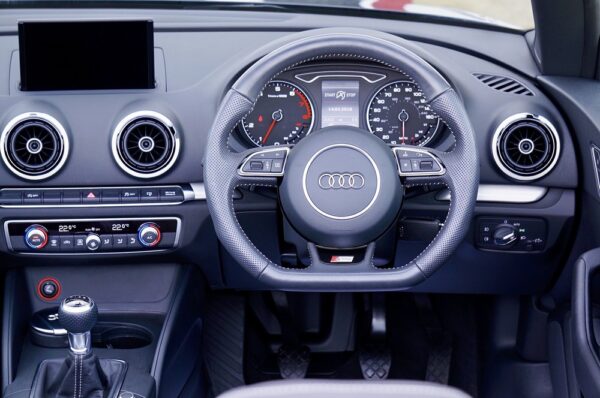Introduction: Knowing how to tow a car is a valuable skill that can come in handy during emergencies or when helping a friend in need. Whether you’re towing a car with a truck or another vehicle, it’s crucial to follow proper procedures to ensure the safety of both vehicles and everyone involved. In this comprehensive guide, we’ll walk you through the step-by-step process, discuss essential car accessories needed for towing, and explain why they are essential.
[wcpcsu id=”1839″]
Step 1: Assess the Towing Capacity
Before attempting to tow a car, it’s vital to determine if your vehicle is capable of handling the load. Check the owner’s manual or contact the manufacturer to find the towing capacity of your vehicle. Exceeding the recommended capacity can put unnecessary strain on your vehicle and compromise safety.
Step 2: Choose the Right Towing Method
There are two primary methods for towing: flat and dolly towing. Flat towing involves towing the vehicle with all four wheels on the ground, while dolly towing involves using a towing dolly to lift the front wheels off the ground. Consider the weight and drivetrain of the towed vehicle to decide on the most appropriate method.
Step 3: Get the Necessary Car Accessories
For safe towing, certain car accessories are essential. These include:
- Tow Straps or Tow Chains: Heavy-duty straps or chains are needed to securely attach the two vehicles together. Choose straps or chains with the appropriate weight rating for your towing needs.
- Tow Bar or Towing Dolly: For flat towing, a tow bar is necessary to connect the two vehicles. Alternatively, a towing dolly is used for dolly towing.
- Safety Chains: Additional safety chains are required as a backup to the tow straps or chains, providing an extra layer of security.
- Tow Lights: Ensure that the taillights, brake lights, and turn signals of the towed vehicle are visible to other drivers. Tow lights are essential to comply with road safety regulations.
- Towing Mirrors: Towing mirrors offer a wider field of view, allowing you to monitor the towed vehicle and surrounding traffic better.
To ensure a successful tow, you’ll need the following ten essential accessories:
- Tow Straps or Tow Chains: Heavy-duty straps or chains to securely attach the vehicles together.
- Tow Bar or Towing Dolly: For flat towing, a tow bar is necessary, or use a towing dolly for dolly towing.
- Safety Chains: Additional safety chains as a backup to the tow straps or chains for added security.
- Tow Lights for towing a car: To make the taillights, brake lights, and turn signals of the towed vehicle visible to other drivers.
- Towing Mirrors: Mirrors that provide a wider field of view for better monitoring of the towed vehicle and surrounding traffic.
- Hitch Receiver: A hitch receiver that fits your vehicle’s towing capacity to connect the tow bar or towing dolly.
- Trailer Brake Controller: For trailers equipped with brakes, a brake controller is needed to synchronize braking between vehicles.
- Trailer Wiring Harness: Connects the tow vehicle’s electrical system to the trailer or towed vehicle for proper lighting and signaling.
- Breakaway Kit: Essential for trailers, a breakaway kit activates the trailer brakes in case it becomes disconnected from the tow vehicle.
- Tire Pressure Monitoring System (TPMS): Monitors the tire pressure of both the tow vehicle and the trailer to ensure optimal safety during towing.
Having these ten accessories will help ensure a smooth and safe towing experience for any vehicle and trailer combination. Always follow manufacturer guidelines and safety precautions when using towing accessories.
Step 4: Towing a car : Prepare the Vehicles for Towing
- Check both vehicles for any mechanical issues, and ensure that they are in good working condition.
- Inflate the tires to the recommended pressure on both vehicles.
- Adjust the tow bar or dolly to the correct height for a level towing position.
Step 5: Attach the Vehicles
- Position the vehicles so they are aligned and in a straight line.
- Attach the tow bar or towing dolly according to the manufacturer’s instructions.
- Connect the tow straps or chains, ensuring they are securely fastened and not twisted.
Step 6: Tow a car : Test the Connection
Before hitting the road, test the towing connection by gently pulling forward and then braking. Make sure the connection is stable and that all lights are functioning correctly.
Step 7: Drive with Caution
- Drive at a moderate speed and maintain a safe distance from other vehicles.
- Accelerate and brake smoothly to avoid putting excessive stress on the towing vehicle.
- Use turn signals earlier than usual to alert other drivers of your intentions.
Step 8: Stay Alert and Check Regularly when towing a car
Frequently monitor the towed vehicle and check for any signs of instability or issues. Take breaks during long journeys to avoid fatigue.
Step 9: How to tow a car : Parking and Turning
When parking, find a spot that allows easy access for detaching the towed vehicle. When turning, make wider turns to accommodate the longer length of the two vehicles.
Step 10: Detach the Vehicles
Upon reaching your destination, follow the manufacturer’s instructions to safely detach the towed vehicle.
[wcpcsu id=”1839″]
Conclusion:
Towing a car requires proper planning, the right car accessories, and strict adherence to safety guidelines. Understanding the towing capacity of your vehicle, choosing the appropriate towing method, and using essential car accessories are crucial for a successful and safe towing experience. Remember to drive with caution, check the connection regularly, and stay alert throughout the journey. By following these steps, you can confidently tow a car and assist others when needed.
Towing a car is a practical skill that every driver should know. Whether you’re helping someone in distress or preparing for a road trip, understanding the towing process and having the right car accessories can make all the difference in ensuring a safe and successful journey. So, follow our step-by-step guide and hit the road with confidence!

